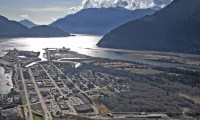New R1 Zone to be considered for adoption, Dust Abatement, Soil Permitting FAQ
|
|
Changes to properties in the new R-1 zone include:
Please note development for properties with three or more stratified units are still required to undergo a Development Permit Applications (DPA3) process. Please contact the planning department if you are considering building Multiple Dwelling Residential units on your property at 604.815.5002 or planning@squamish.ca
DUST CONTROL With summer weather arriving sooner than expected this year, the District is issuing a notice for active constructions or site alteration sites to ensure that there are dust mitigation measures being taken and dust is controlled at all times. Dust can be a safety hazard and a major nuisance for the public, and with elevated levels of active development it is a major concern for the District as we head into the summer. Use of water is common practice for managing dust. Please note that only non-potable water can be used for dust abatement. District officers continue to proactively monitor development sites during dry periods. Please familiarize yourself with the regulations as we roll into summer!
|
June 14, 2024
